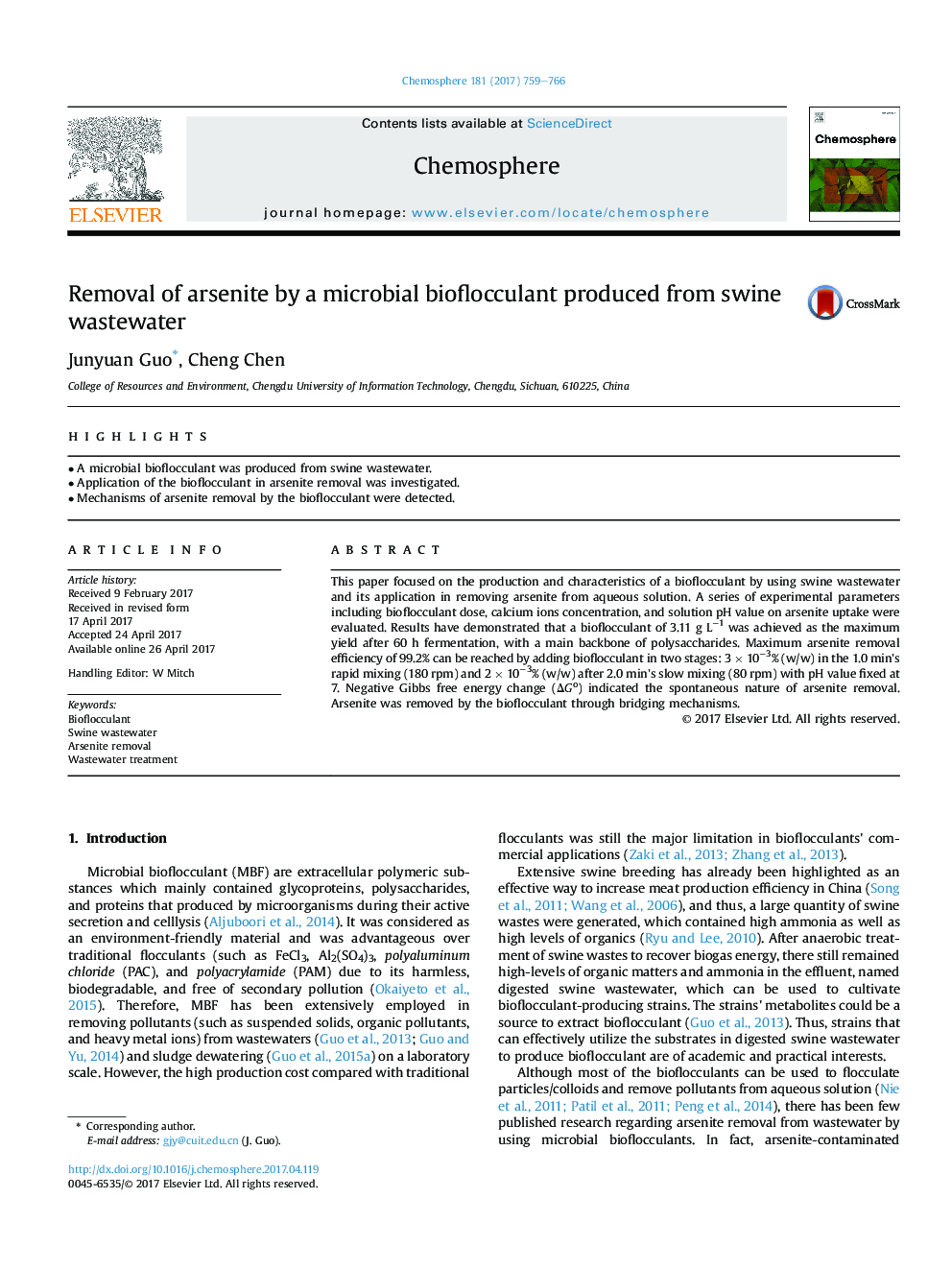| Article ID | Journal | Published Year | Pages | File Type |
|---|---|---|---|---|
| 5747206 | Chemosphere | 2017 | 8 Pages |
â¢A microbial bioflocculant was produced from swine wastewater.â¢Application of the bioflocculant in arsenite removal was investigated.â¢Mechanisms of arsenite removal by the bioflocculant were detected.
This paper focused on the production and characteristics of a bioflocculant by using swine wastewater and its application in removing arsenite from aqueous solution. A series of experimental parameters including bioflocculant dose, calcium ions concentration, and solution pH value on arsenite uptake were evaluated. Results have demonstrated that a bioflocculant of 3.11 g Lâ1 was achieved as the maximum yield after 60 h fermentation, with a main backbone of polysaccharides. Maximum arsenite removal efficiency of 99.2% can be reached by adding bioflocculant in two stages: 3 Ã 10â3% (w/w) in the 1.0 min's rapid mixing (180 rpm) and 2 Ã 10â3% (w/w) after 2.0 min's slow mixing (80 rpm) with pH value fixed at 7. Negative Gibbs free energy change (ÎGo) indicated the spontaneous nature of arsenite removal. Arsenite was removed by the bioflocculant through bridging mechanisms.
